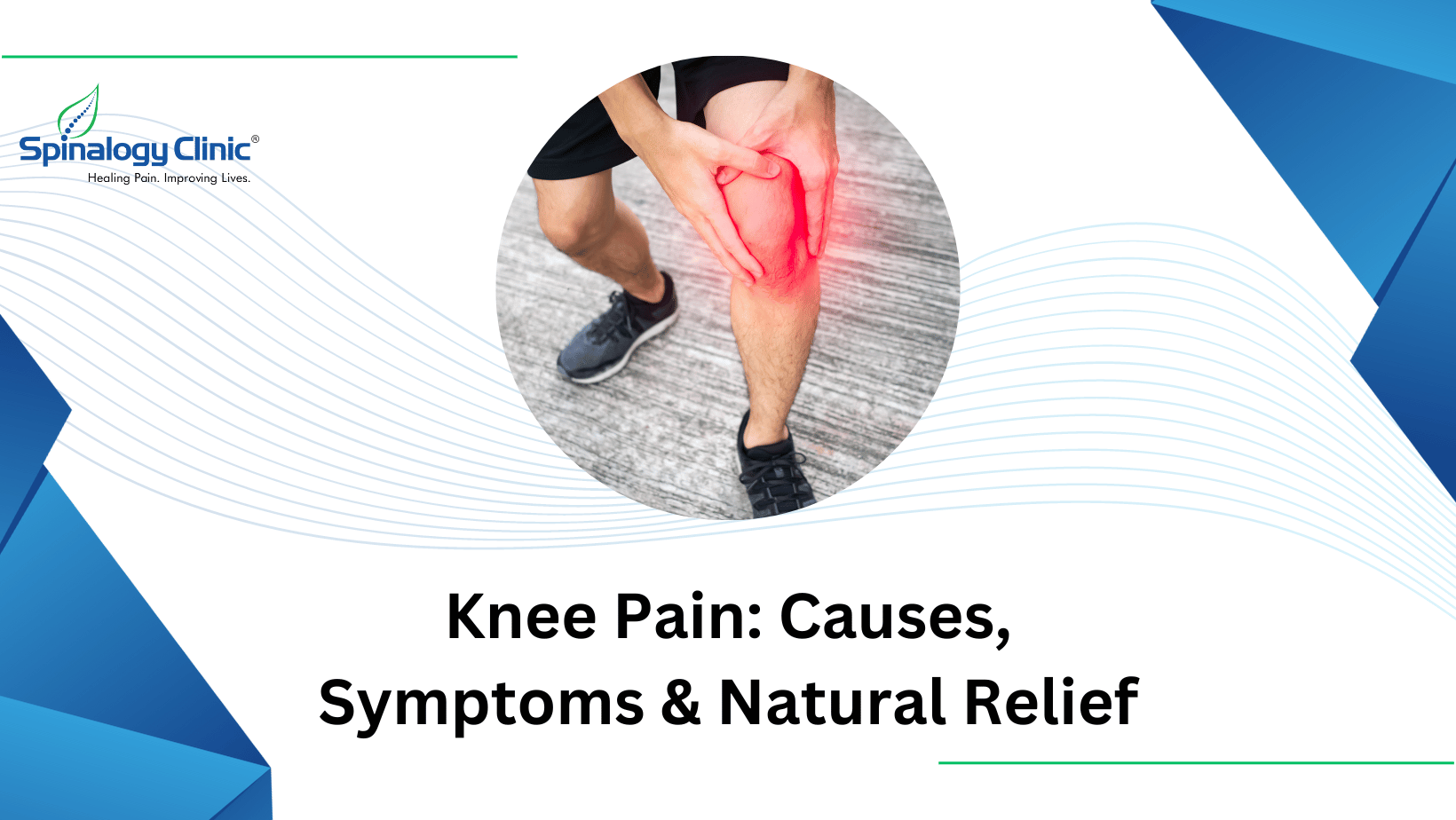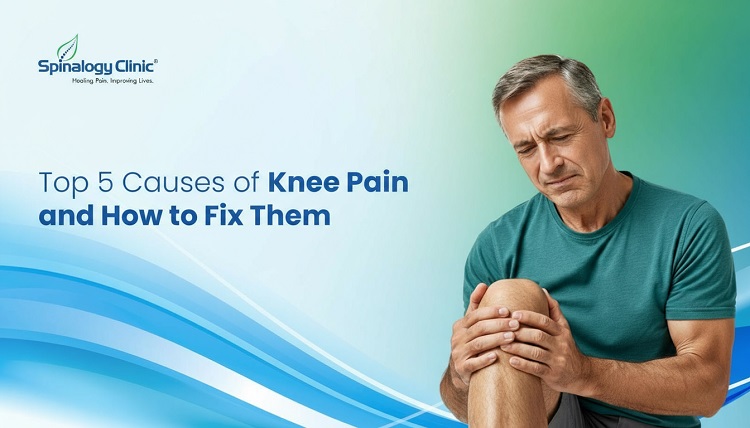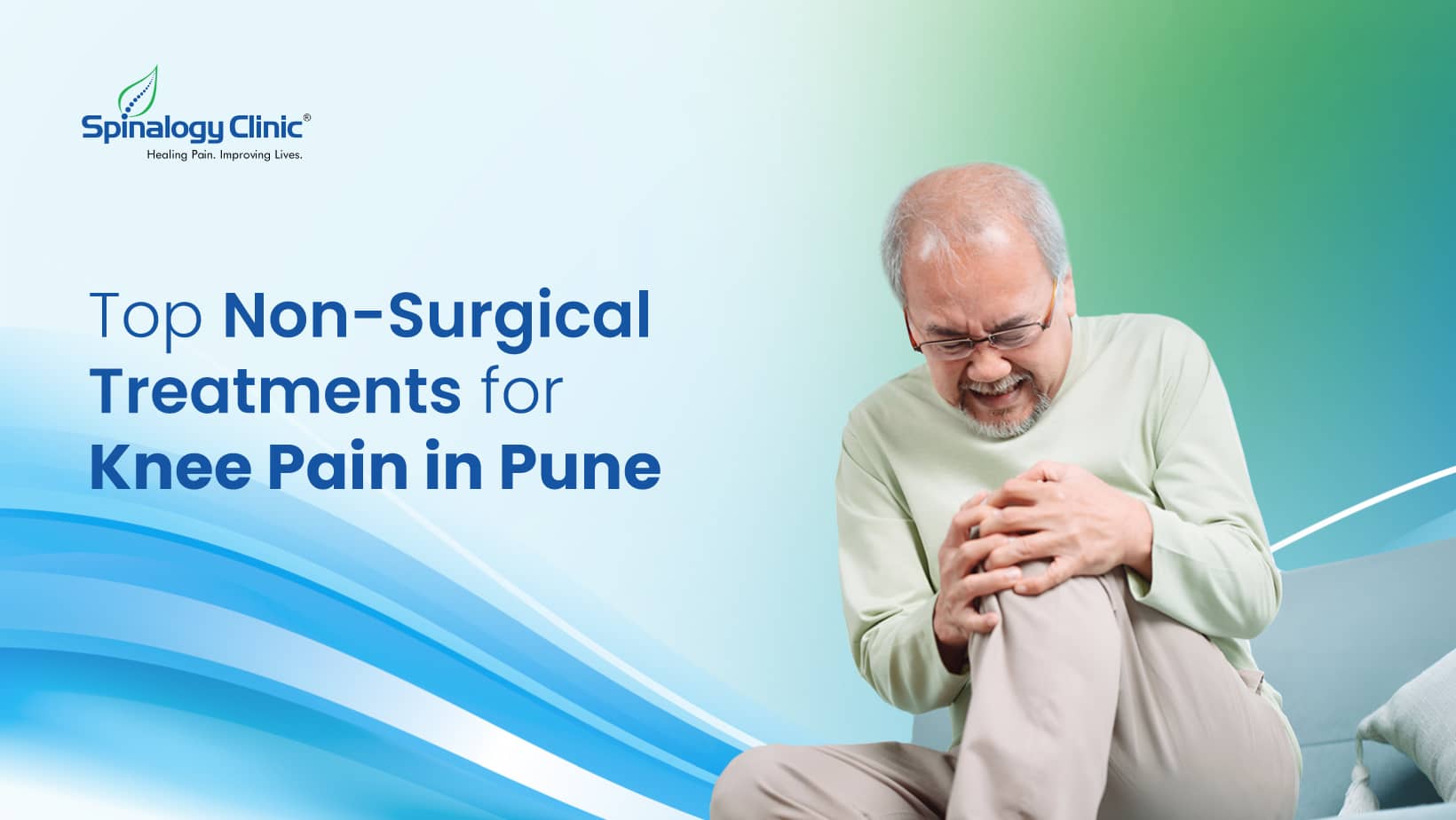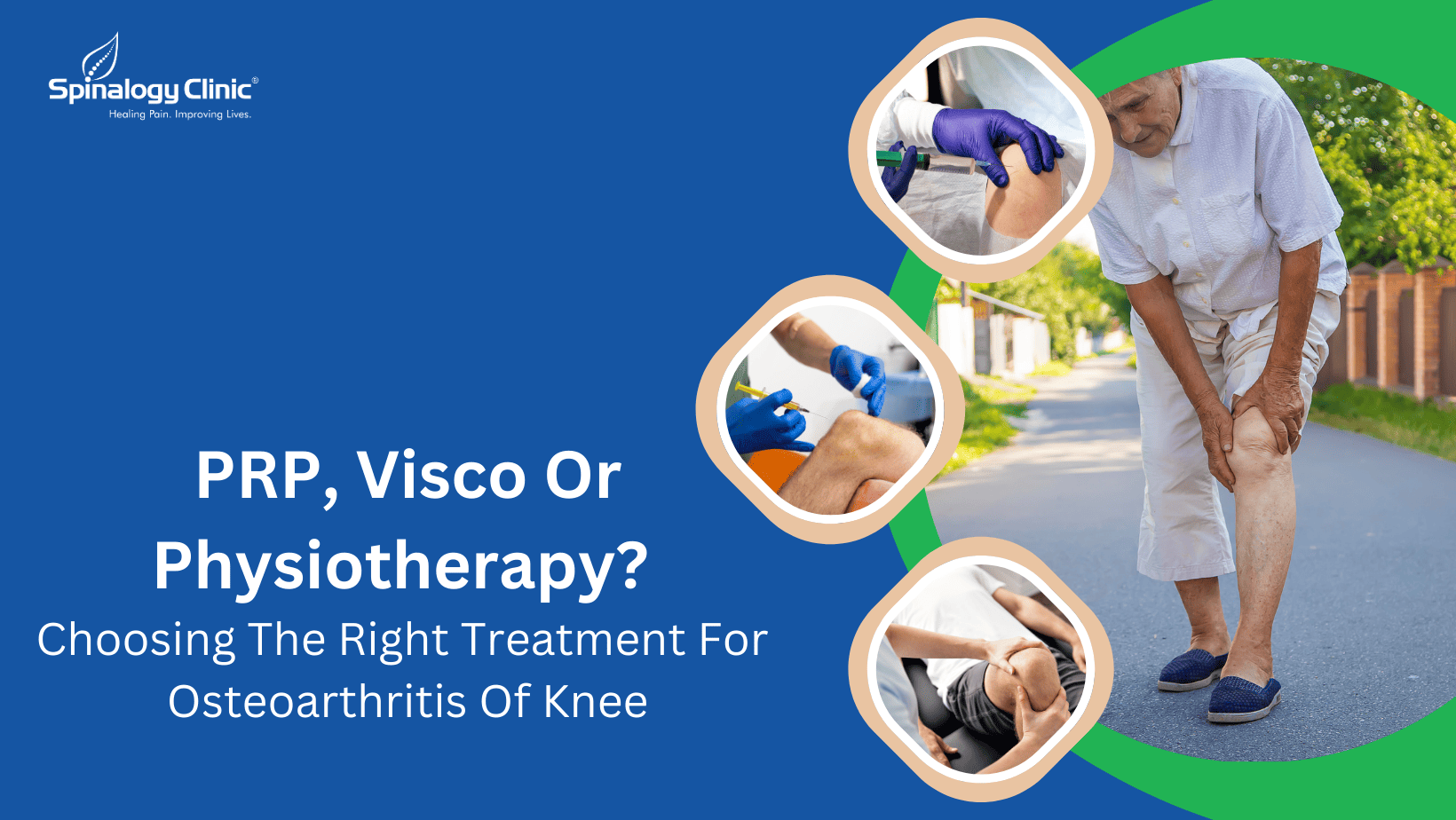Knee Pain: Causes, Symptoms And Natural Relief
Knee pain is incredibly a common complaint that affects people of all ages. Knee pain is a special problem for athletes and also for the elderly. Over half of all athletes endure it every year. It may start suddenly, often after an injury or exercise. Knee pain may also begin as a mild discomfort, then slowly worsen.
Causes of Knee Pain
Some of the most common reasons for knee pain in the young are swollen or torn ligaments, meniscus (cartilage) tears, and runner’s knee, while in old age, degenerative arthritis is the leading factor.
Causes of knee pain include injury, mechanical problems, degeneration, arthritis, infrequently infection, and rarely bone tumors.
Knee Injuries
A knee injury can affect any of the ligaments, tendons, or fluid-filled sacs (bursae) that surround the knee joint as well as the bones, cartilage, and ligaments that form the joint itself. Some of the common knee injuries, such as anterior cruciate ligament injury or medial collateral ligament injury, may cause bleeding into your knee, which makes the pain worse.
-
ACL Injury: The tearing of the anterior cruciate ligament (ACL). It is particularly common in people who play basketball, soccer, or other sports that require sudden changes in direction.
-
MCL Injury: Damage to the ligament on the inside of the knee, often caused by twisting or an impact to the outside of the knee. Medial ligament injuries are common in contact sports such as football, rugby, and martial arts.
-
Torn Meniscus: The meniscus can tear if you suddenly twist your knee while bearing weight on it.
-
Knee Bursitis: Overuse, falls, or repeated bending can irritate the bursa, causing pain and swelling. Two common types are Housemaid’s knee and Preacher’s knee. A Baker’s cyst refers to swelling of one of the bursae.
-
Patellar Tendinitis: Irritation and inflammation of one or more tendons. This causes pain in the front of the knee that gets worse when going up and down stairs or inclines. Overuse can make the tendons inflamed and sore. One type of tendonitis is known as Jumper’s knee.
-
Strain or Sprain: Minor injuries to the ligaments caused by sudden or unnatural twisting.
Mechanical Problems
Some examples of mechanical problems include:
-
Iliotibial Band Syndrome: Lateral knee pain caused by inflammation of the distal portion of the iliotibial band. The IT band becomes inflamed at its proximal origin and causes referred hip pain. Distance runners are especially susceptible.
-
Dislocated Kneecap: Occurs when the patella, which covers the front of the knee, slips out of place, usually to the outside.
Arthritis and Related Conditions
-
Osteoarthritis: A wear-and-tear condition that occurs when the cartilage in your knee deteriorates with use and age.
-
Rheumatoid Arthritis: An autoimmune condition that can affect almost any joint in your body, including the knees.
-
Gout: Arthritis caused by uric acid crystal buildup in the joint.
-
Pseudogout: Similar to gout, but caused by calcium crystal deposits in and around the joint. Knees are most commonly affected.
-
Septic Arthritis (Infected Knee): An infection of the knee joint leading to swelling, pain, and redness, often with fever. Movement becomes very painful.
Other Conditions Causing Knee Pain
-
Osgood-Schlatter’s Disease: Swelling and tenderness over the bony bump just below the kneecap. Common in teenagers, especially boys who overuse thigh muscles during sports.
-
Fractures: Breaks in any of the knee bones, usually from traumatic accidents or contact sports.
-
Chondromalacia (Patello-Femoral Syndrome / PFPS): Anterior knee pain, often felt around the kneecap or in front of the knee.
Discover advanced non-surgical knee pain treatments in Pune
Symptoms of Knee Pain
The location and severity of knee pain may vary depending on the cause and the structure involved. Regardless of age or activity level, anyone may experience knee pain. It is unpleasant and can interfere with walking, sitting, or even sleeping.
Common Symptoms Include:
-
Swelling and stiffness
-
Redness and warmth to the touch
-
Tenderness
-
Inability to fully straighten the knee
-
Inflammation even with minor activity
-
Popping or snapping, especially during an ACL tear
-
Weakness or instability when extending the knee (due to torn or stretched ligaments)
-
Knee locking — inability to straighten or bend the knee, caused either by pain or a physical block
-
Grinding or crunching noises (cartilage problems or arthritis)
-
Acute swelling and pain after injury, often indicating ligament tear or fracture
-
Pain while climbing stairs (meniscus injury)
-
Pain while descending stairs (patellar pain)
Pain Timing Indicators:
-
Morning pain that eases after gentle movement: Early arthritis
-
Pain when climbing stairs: Meniscus injury
-
Pain when descending stairs: Kneecap problems
Natural Relief for Knee Pain
-
Ice Therapy: Reduces both pain and inflammation. Apply ice for 10–15 minutes twice daily.
-
Steam / Heat Therapy: Warm baths or hot water bags help relieve stiffness and pain.
-
Massage Therapy: Gently massage the knee with warm olive oil 2–3 times a day, 5–10 minutes each session.
-
Weight Exercises: Avoid weight-bearing activities and stair climbing if they worsen pain.
-
Compression: Use a compression bandage to prevent swelling and maintain alignment. Should not be too tight and must be removed at night.
-
Elevation: Keep the leg elevated on pillows or recliners to reduce swelling.
-
Physical Therapy: Essential for recovery in most orthopedic conditions. Helps restore mobility, strength, and balance.
-
Stretching Exercises: Improve flexibility of surrounding muscles and tendons.
-
Strengthening Exercises: Target quadriceps, hamstrings, and hip muscles to support knee alignment.
-
Knee Braces / Arch Supports: Improve stability and prevent giving way during activity.
-
Taping: Supports the patella, reduces pain, and aids exercise performance.
-
Suitable Footwear: Cushioned or springy soles reduce strain when walking.
CONSULT a KNEE SPECIAIST in PUNE or Contact Us




